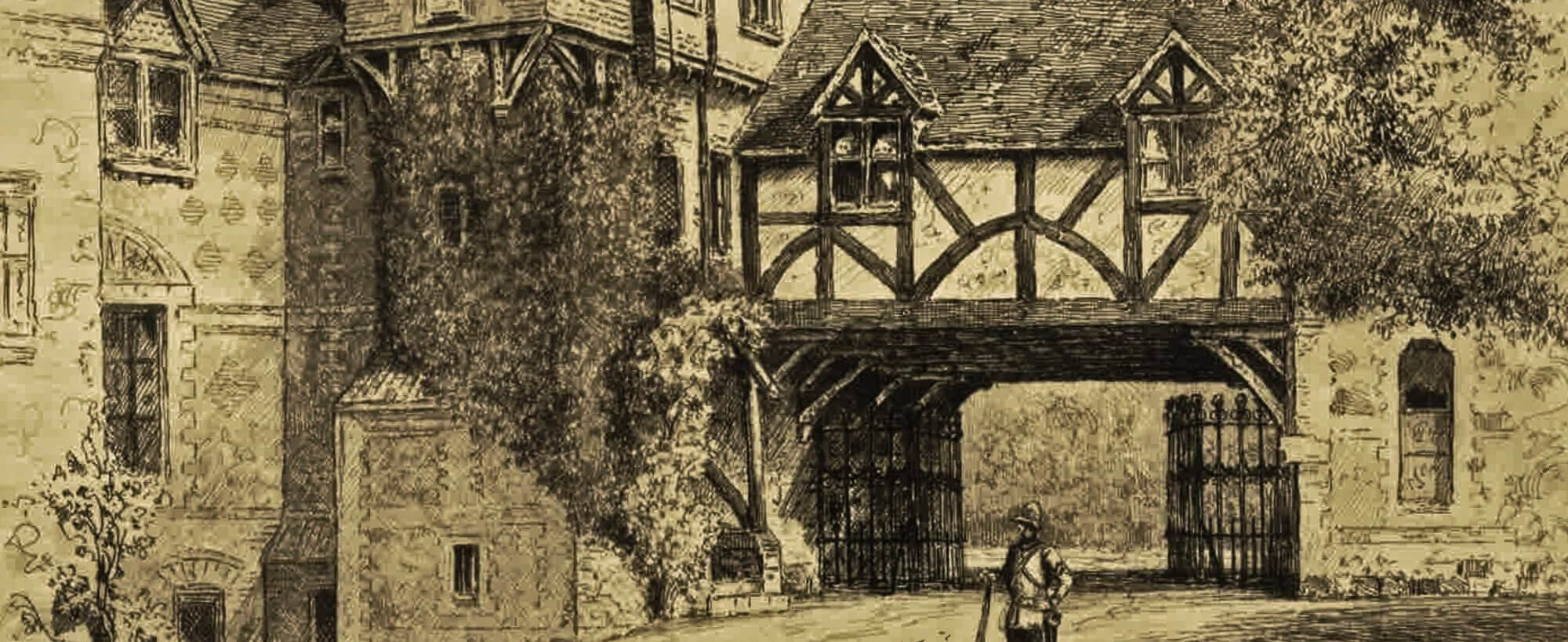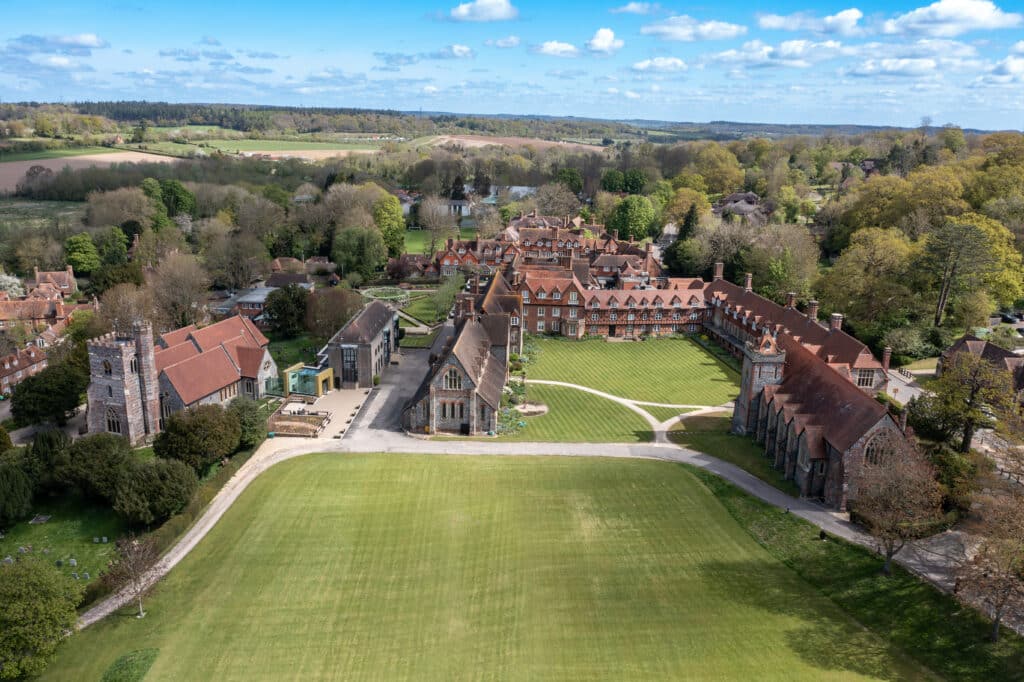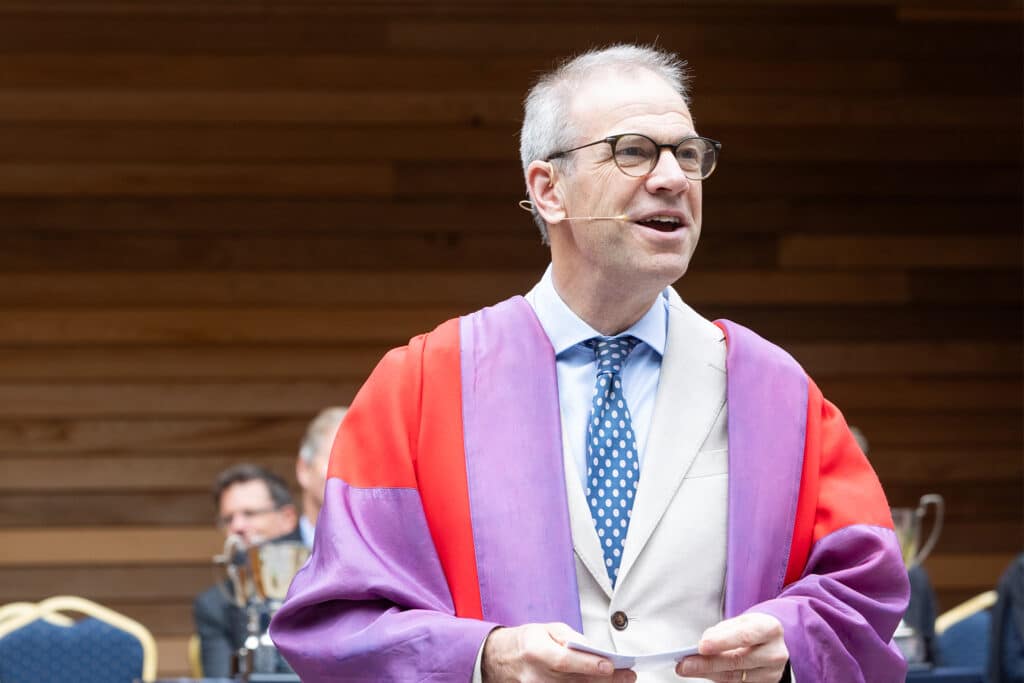
The College today is a place much-changed since its nineteenth century foundation. Set up by the local squire, Thomas Stevens, it was intended as a prep school to educate choirboys for the local church of which Stevens was Rector.
That church, in which the Duchess of Cambridge was baptised, is now closed and the College has its own Chapel, begun in 1892. Stevens started his school with just one pupil, Blackall Simonds, whose portrait now hangs outside the Headmaster’s Study and, in the Spring of 1850, he was joined by two other boys – in arithmetic terms, at least, a healthy rate of growth was recorded.
The modern College is a community of people drawn from across the globe and the influence of five years at the College can be as great in Germany, Russia or China as it is in the UK.
The Founder’s Prayer recalls a more sober reality, speaking of “the disappointment of [Stevens’] purposes in this life” and the College would not have made it into the twentieth century were it not for the enterprising imagination and managerial skill of H.B. Gray who took the helm in 1881 and remained in charge until 1910.
Chief among Gray’s imaginative initiatives was the introduction of the Greek Play, which began in 1882 and was performed from 1890 onwards in a theatre hewn from a local chalk pit by Gray and his pupils. By 1892, the chalk pit theatre could sit 2,000; the plays were reported in The Illustrated London News and the fame, finances and future of the College were secure.
The pace of change set at the end of the nineteenth century has been, if anything, accelerated in recent years. There were nine girls in the school when I joined in 1987 (all were day girls) and there was one trailblazing non-male teacher: now every constituency in the College (with the exception of the matron body) is gloriously mixed. New houses have appeared, too, whilst another house has disappeared and a further one re-branded.
The opening of Faulkner’s revolutionised the pastoral set-up in the school and had a similar impact on the College’s reputation and popularity to Gray’s Greek Play: Bradfield in 1987 had just under 500 on roll; today, there are over 800 in the pupil body. And even things that seem unchanged are, in reality, very different; significant investment has seen the chalk pit where Greek tragedy was played for a century, transformed to make an amphitheatre fit for the third millennium.
There were nine girls in the school when I joined in 1987 […] now every constituency in the College is gloriously mixed.
No wonder then that it is thought time for a new edition of the Bradfield College history. The hope is that a new volume will roll off the presses in 2025.
But a modern history cannot simply be an extended chronological narrative of the type offered in the past. A focus, chapter by chapter, upon each Headmaster and his deeds would miss the modern interest as certainly as a Dining Hall hung with men’s portraits seems mildly out of step with present times. Nor is Bradfield today simply a school housed in a fine collection of buildings set in the Pang Valley; the modern College is a community of people drawn from across the globe and the influence of five years at the College can be as great in Germany, Russia or China as it is in the UK.
So a new history is due and a new type of history is needed. Plans are presently embryonic but, as they develop, this website will periodically carry reports of progress. We can be sure of progress for the past has taught us that Bradfield is not a school which stands still – it is in constant, pacey change with a tradition of enduring innovations which add tangible value both to its reputation and the pupils’ educational experience.



